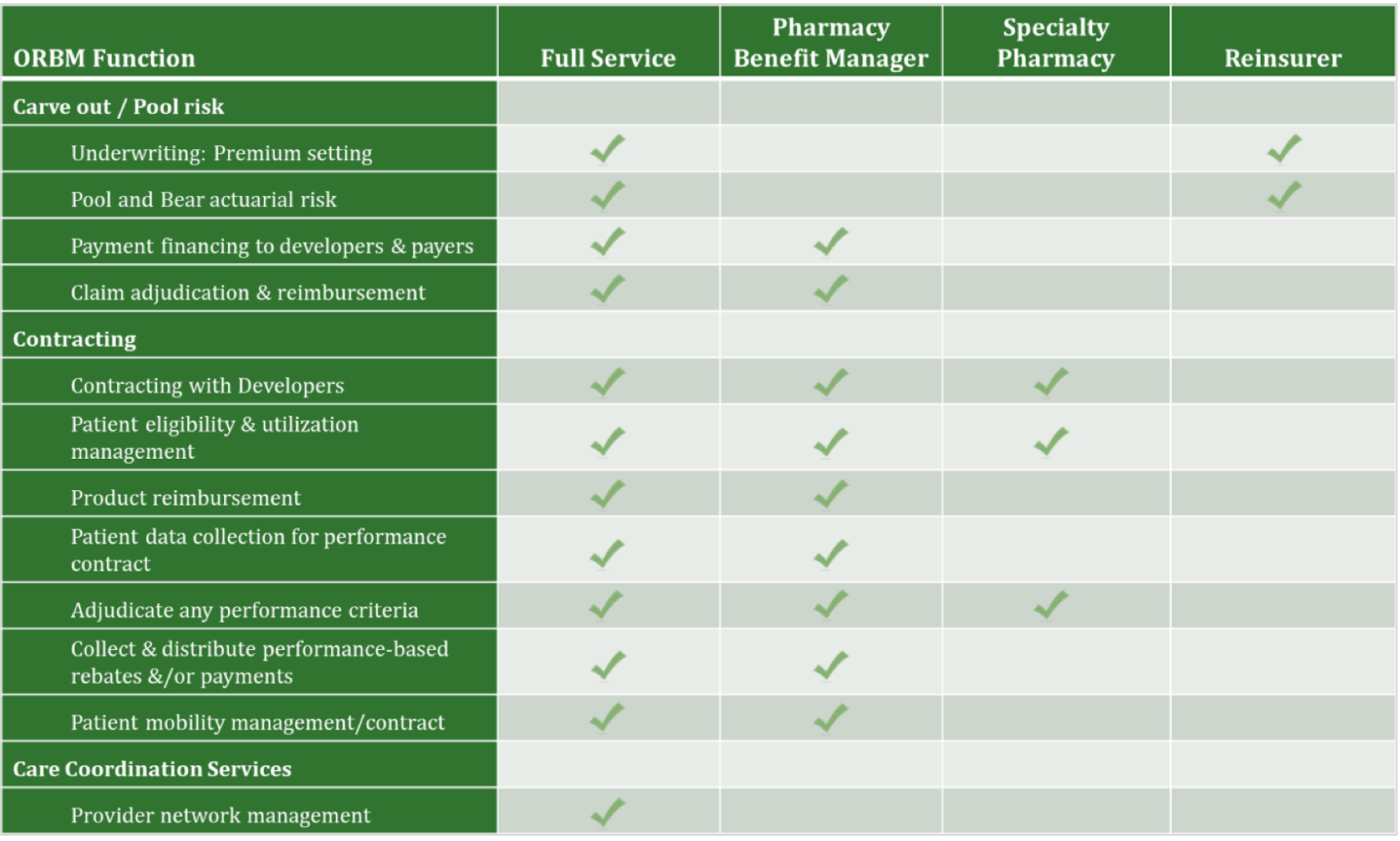Orphan Reinsurer and Benefit Manager (ORBM)
A FoCUS-proposed, new service solution, the Orphan Reinsurer and Benefit Manager (ORBM), may be helpful to payer organizations that desire assistance managing actuarial risk and executional challenges associated with making cell and gene therapies (CGTs) available to patients.
Many CGTs target conditions that are orphan (<200,000 US patients) or ultra-orphan (<10,000) diseases. Small patient numbers mean that some insurers—in particular, smaller insurers—may not have many of these patients in their beneficiary populations. As a result, it may not be efficient for all insurers to build capabilities internally to serve these patients or establish their own contracts with treating providers and manufacturers. Moreover, smaller insurers may not be able to manage the actuarial risk of uncertain and variable numbers of affected patients, which could lead to significant swings in plan costs in some years.
An ORBM can help facilitate access to CGTs and access to Precision Financing Solutions by:
- Carving out actuarial risk
- Providing medical management
- Enabling scale for innovative contracting and financing
As an intermediary, an ORBM could combine the risk-bearing of reinsurers with the therapy-contracting capabilities of pharmacy benefit managers, the provider network-building and medical management capabilities of insurers, and perhaps a specialty pharmacy distribution capability. The ORBM model has similarities to carve-outs for mental health and provider centers of excellence in other areas (transplant centers, cystic fibrosis care centers, etc.). One issue to manage with an ORBM is the scope of patient services covered. If, for example, an ORBM manages rare disease and a primary insurer manages routine patient care/co-morbidities, both parties should mitigate the risk of cost-shifting.
While there is no entity today in the market that calls itself an “ORBM,” there are organizations that are already beginning to explore providing some of the services described above. We expect multiple types of ORBMs to emerge, each of which would select its range of services to offer, diseases to cover, and risks to bear.
While numbers of CGTs available today are still small, ORBMs may offer some payers options as they consider how they will manage these therapies. We expect that large commercial payers and Medicare fee-for-service may have less need for an ORBM’s services, but small commercial payers, self-insured employers, Medicaid, and smaller Medicare Advantage plans may choose to utilize some or all these services.
Additional detail on potential ORBM services may be found here.
Example capabilities that could be delivered by an ORBM